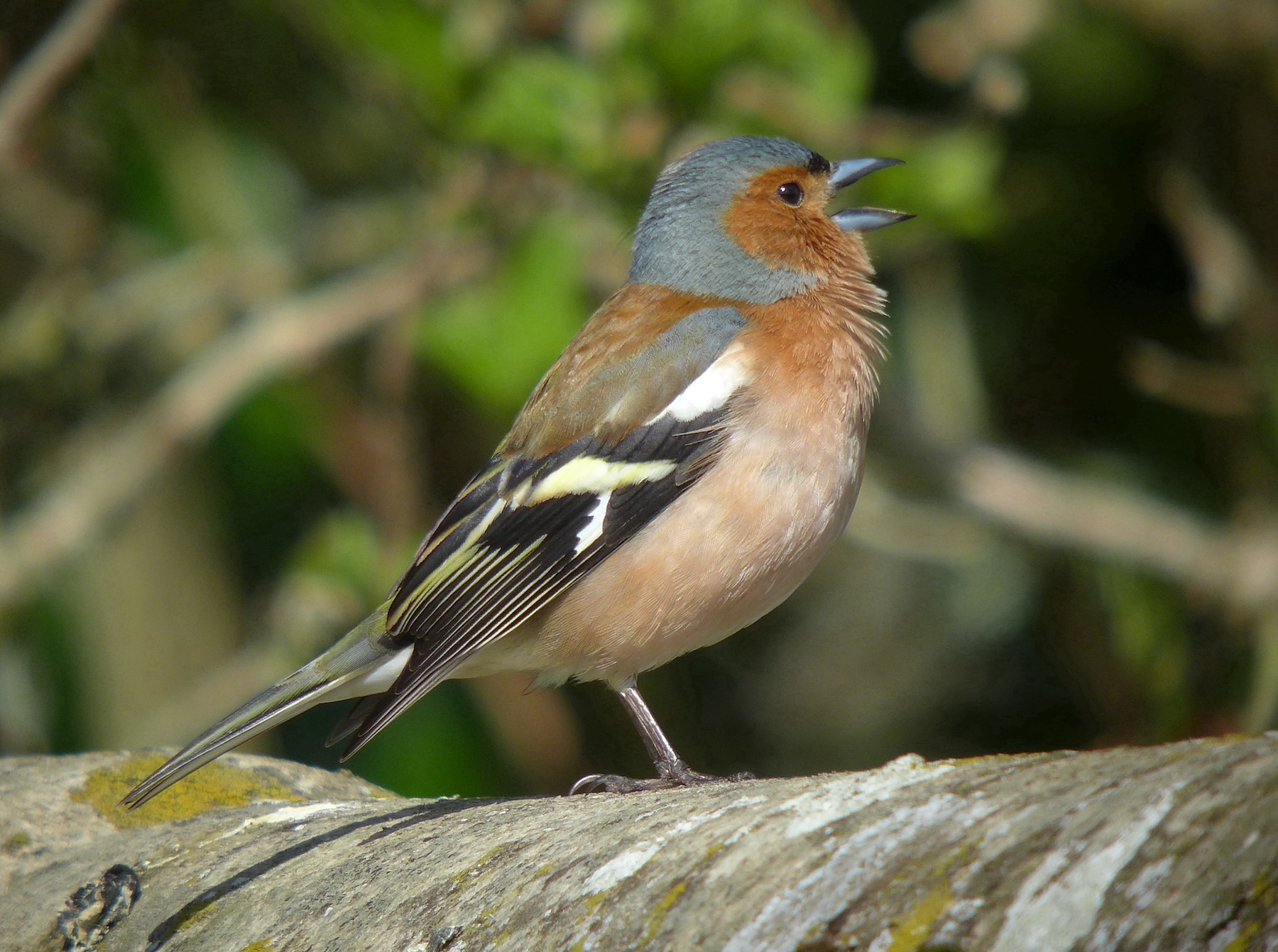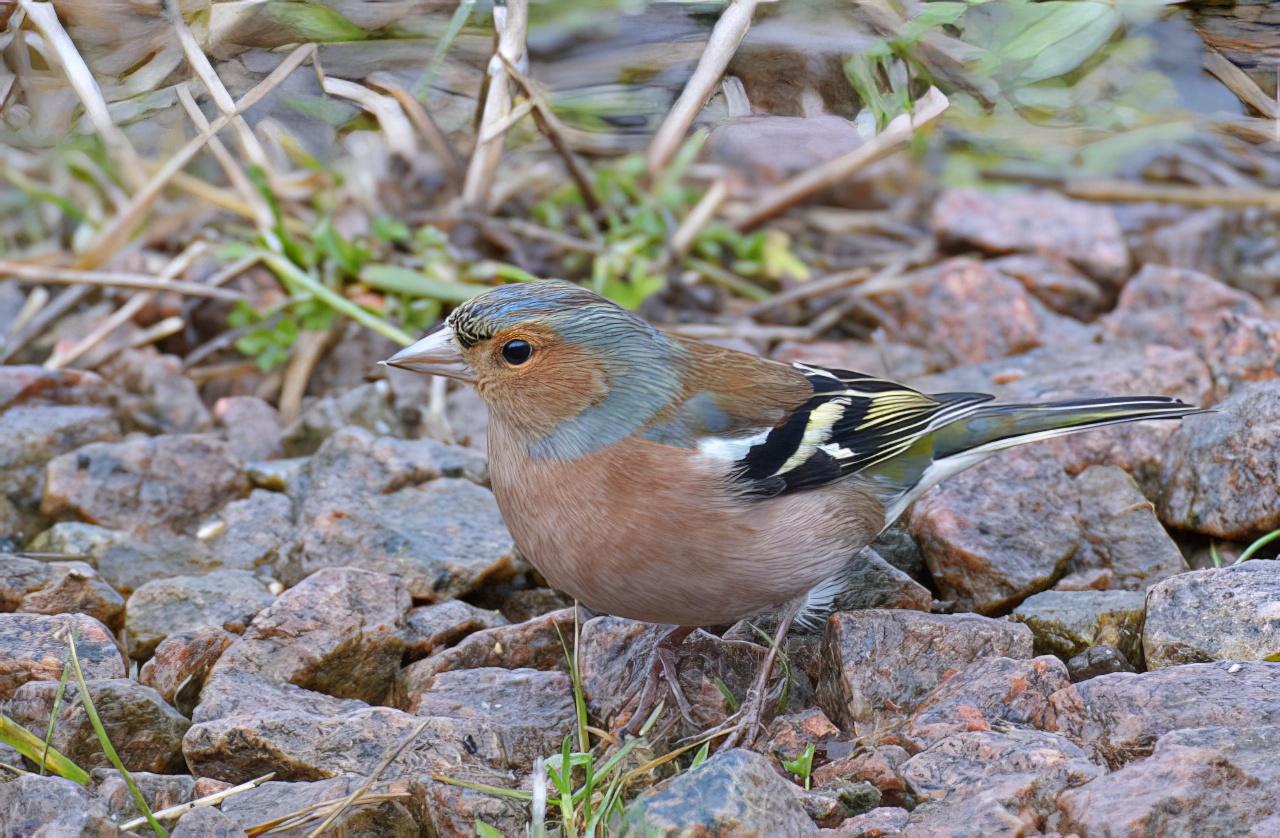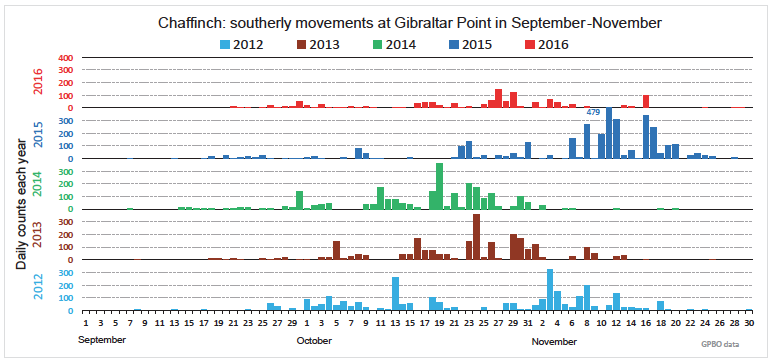Chaffinch Fringilla coelebs
British form gengleri an abundant resident. Nominate continental form a passage migrant and winter visitor. Amber List (gengleri) and Green List (nominate).


An abundant breeding bird, winter visitor and passage migrant that is widely distributed and nests in all types of woodland, hedgerows scrub and gardens. There was a considerable decline in numbers during the 1950s attributed to the use of toxic seed dressing but there has been a good recovery since and Chaffinch abundance has increased rapidly since the early 1970s, according to BTO surveys. The population seemed to stabilise for a period during the 1990s but this was followed by a population downturn from 2006, linked to the widespread and severe outbreak of trichomonosis that began in 2005. The BTO BBS data to 2017 shows that the national and regional indices are approaching the basal indices first calculated in 1994.
Finch trichomonosis, caused by the protozoal parasite Trichomonas gallinae, was first recognized as an emerging infectious disease of British passerines in 2005, and the index case of this disease occurred in a Chaffinch in Ayrshire, Scotland, April 2005. Mortality in the Chaffinch population though was at a much lower level than in the Greenfinch and was not associated with detectable population declines, either at the level of individual countries or across the British Isles as a whole (Lawson et al 2012).
The British Chaffinch population is augmented during the autumn and winter months by immigrant birds from northern Europe, Germany and the Low Countries. Birds ringed in the county in spring and autumn have been controlled or recovered in Denmark, Finland, Germany, Sweden, The Netherlands, and at sea in the Baltic and North Seas. Foreign-ringed birds controlled or recovered in Lincolnshire have come from Denmark, France, Germany and Norway. As ever, assiduous visible migration counts made at Gibraltar Point make interesting reading (chart). During 2012-2016, between 1125-3120 birds were counted moving south. As can be seen in the chart, passage can last from late September to the end of November (or even into December) but its timing varies between years, presumably depending on weather conditions.The annual totals between 2012-2016 have since been eclipsed when on 15th March 2019 a staggering 4232 were logged moving south there!

Reference
Lawson, B., Robinson R.A., Colvile K.M., Peck K.M., Chantrey J., Pennycott T.W., Simpson, V.R., Toms, M.P., Cunningham, A.A. (2012). The emergence and spread of finch trichomonosis in the British Isles. Philosophical Transactions of the Royal Society B 367: 2852-2863 doi:10.1098/rstb.2012.0130.
(Account prepared March 2019. Includes all records to 2017 and a 2019 update)
